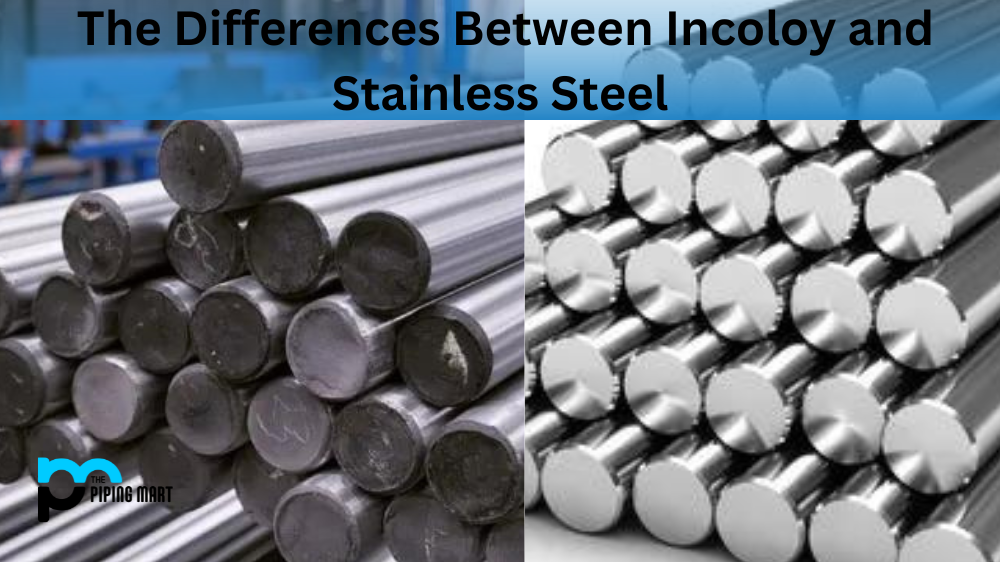When it comes to metal alloys, there are many different choices available. Two of the most popular are incoloy and stainless steel. Both materials have their own unique benefits, which makes them great options for a variety of applications. But what exactly is the difference between them? Let’s take a look at how these two metals compare.
Incoloy vs Stainless Steel
Composition and Properties Incoloy and stainless steel are both composed of iron and chromium, but that’s where the similarities end. Incoloy is an alloy made from nickel-chromium-iron, while stainless steel is an alloy made from chromium-nickel-steel (with small amounts of other elements). This difference in composition leads to some important differences in properties. For example, incoloy has higher corrosion resistance than stainless steel, making it a better choice for applications that involve exposure to harsh chemicals or extreme temperatures. On the other hand, stainless steel is stronger than incoloy, so it’s a good choice for structural components that need to bear heavy loads or be used in high-stress environments.
Costs and Availability Another important factor to consider when choosing between incoloy and stainless steel is cost. Generally speaking, incoloy is more expensive than stainless steel due to its higher nickel content. However, this cost difference can vary depending on market prices at any given time. Additionally, availability should also be taken into account; while both materials can be sourced relatively easily in most markets, incoloy may not always be available in the exact size or shape you need for your application.
Inconel vs stainless steel weight
Inconel and stainless steel are two common materials used in a variety of applications. When it comes to weight, inconel is significantly heavier than stainless steel. Inconel weighs around 8.2 pounds per cubic foot, while the weight of stainless steel is only around 4 pounds per cubic foot. This difference in weight has its advantages and disadvantages depending on the needed application. For example, for certain engineers who require a sturdier material for their projects inconel would be the ideal choice due its added weight. Others may need a lighter metal if portability is necessary and in these cases stainless steel might be preferred. Understanding the different weights between inconel and stainless steel is important for any project that requires metal as part of its components.
Inconel vs stainless steel cost
Inconel and stainless steel are two of the most popular metals used in engineering equipment, but they vary significantly in cost. Stainless steel tends to be much cheaper due to its abundance, easy availability, and varied grades depending on need or application. While Inconel is considered one of the strong metals for engineering purposes due to its corrosion-resistance and high tolerance for heat, it comes at a considerably higher expense than stainless steel. Nevertheless, when corrosion resistance is essential for any application, it’s worth considering if Inconel, rather than stainless steel is the right solution for the job; especially when long term durability is desired.
Conclusion
Incoloy and stainless steel are both popular metal alloys with their own set of advantages and disadvantages. When deciding which one to use for your project or application, it’s important to consider factors such as composition, properties, costs and availability. By weighing these factors carefully against each other you can make an informed decision about which material will best suit your needs. In short, when it comes to choosing between incoloy vs stainless steel—there’s no one right answer! It all depends on your specific requirements and budget constraints.

Pipingmart is a B2B portal that specializes in metal, industrial and piping items. Additionally, we share the latest information and information about materials, products and various types of grades to assist businesses that are involved in this business.




